MABE1831
Anti-CSB (ERCC6) Antibody, clone ICSB-3H8
clone 1CSB-3H8, from mouse
Synonym(s):
DNA excision repair protein ERCC-6, ATP-dependent helicase ERCC6, Cockayne syndrome protein CSB
About This Item
Recommended Products
biological source
mouse
antibody form
purified antibody
antibody product type
primary antibodies
clone
1CSB-3H8, monoclonal
species reactivity
human
packaging
antibody small pack of 25 μg
technique(s)
ChIP: suitable
flow cytometry: suitable
immunocytochemistry: suitable
immunoprecipitation (IP): suitable
western blot: suitable
isotype
IgG1κ
NCBI accession no.
UniProt accession no.
target post-translational modification
unmodified
Gene Information
human ... ERCC6(2074)
Related Categories
General description
Specificity
Immunogen
Application
Immunoprecipitation Analysis: A representative lot immunoprecipitated CSB (ERCC6) in Immunoprecipitation applications (Bradsher, J., et. al. (2002). Mol Cell. 10(4):819-29).
Chromatin Immunoprecipitation (ChIP) Analysis: A representative lot detected CSB (ERCC6) in Chromatin Immunoprecipitation applications (Kristensen, U., et. al. (2013). Proc Natl Acad Sci USA. 110(25):E2261-70; Velez-Cruz, R., et. al. (2012). Proc Natl Acad Sci USA. 110(3):E212-20).
Western Blotting Analysis: A representative lot detected CSB (ERCC6) in Western Blotting applications (Bradsher, J., et. al. (2002). Mol Cell. 10(4):819-29).
Epigenetics & Nuclear Function
Quality
Flow Cytometry Analysis: 1 µg of this antibody detected CSB (ERCC6) in one million A431 cells.
Target description
Physical form
Storage and Stability
Other Notes
Disclaimer
Not finding the right product?
Try our Product Selector Tool.
Certificates of Analysis (COA)
Search for Certificates of Analysis (COA) by entering the products Lot/Batch Number. Lot and Batch Numbers can be found on a product’s label following the words ‘Lot’ or ‘Batch’.
Already Own This Product?
Find documentation for the products that you have recently purchased in the Document Library.
Our team of scientists has experience in all areas of research including Life Science, Material Science, Chemical Synthesis, Chromatography, Analytical and many others.
Contact Technical Service







